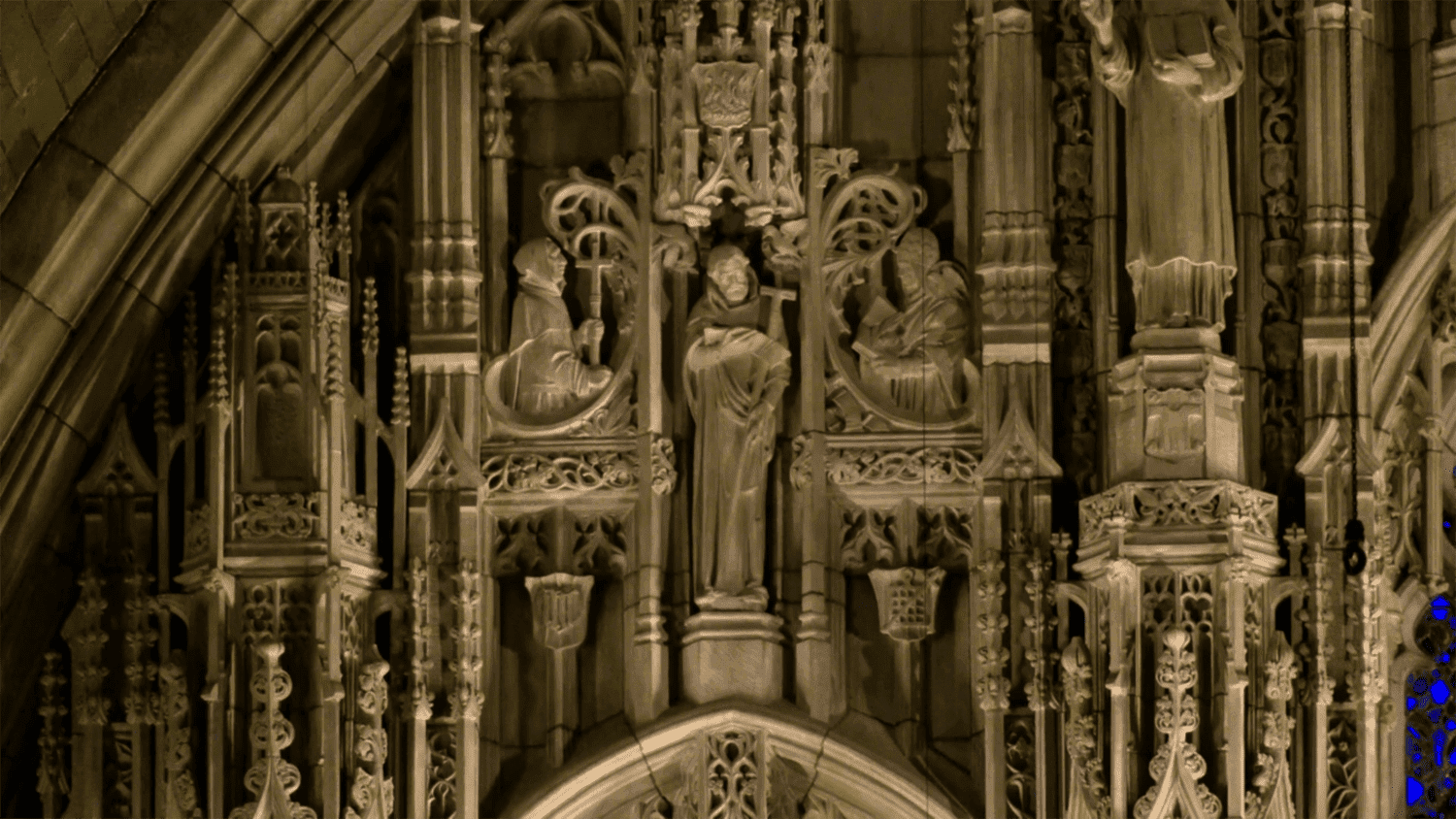
Dear Friends in Christ,
Join me this Sunday, October 31 at 10:00am when I will continue my class series on the Theology of the Reredos. Column by column, I having been exploring the personages and symbolism of this masterpiece of craftsmanship, going deeper into what this great work of sacred art communicates to Christians and what it means for our faith in this place. The class will continue to include close up images of this powerful work of sculpture, including images of Saint Francis, missionary bishops, and a number of apostles and prophets. This class will be building on the previous classes, but so presented that one will not have had to attend the previous classes to appreciate subsequent ones.
Here is some additional commentary on our worship space that I appreciated in my research from Ayla Lepine:
Cram’s unique interpretation of the Gothic style was not drawn entirely from the Middle Ages or from a single source. Rather it was an amalgam of medieval and nineteenth-century examples of the Gothic Revival. Gothic itself was a language charged with sacred meaning. Cram’s rhetoric regarding the future of architecture in America as a Gothic future is telling in its transatlantic energy: ‘On this strong stock would be grafted all the beauty that could be gathered from the world … through the whole marvelous growth … the vigorous vital principle of Christian and English civilization.’
Envisioning architectural radicals like a band of knights in pursuit of divine knowledge, Cram enthused: “They rode in search of Beauty and Truth, and these are attributes of God, not of man, and not to be perceived by eyes of flesh and blood. Yet, as with the grail, the hopeless quest brought marvellous adventure, and more, for it established forever a type of beauty … and they brought back a wonderful thing, the mystical knowledge of Art. This was the Gothic Quest, and if we think of it as an historical episode … we think foolishly.”
When Bertram Goodhue designed the reredos for the new St Thomas’, which would be carved by the eminent sculptor Lee Lawrie, the vast interconnected system of sculpted figures was positioned around a central image: a replication of the form of the earlier St Gaudens altarpiece destroyed in the previous church.
From the first man and woman to an Episcopalian cleric living in America in the first years of the twentieth century, the political and theological history of Anglicanism and Anglophilia ranges across the wall. The reredos within Cram and Goodhue’s St Thomas is a memorial to a previous building. It is also a declaration of Anglican identity across times and places between Britain and America and through empire’s missionary context stretching further into India and New Zealand. Medieval style sustained and gave shape to modern religion.
You are welcome to join me in person on the Fifth Floor of the Parish House or on Zoom using the link below.
Grace and peace to you,
Fr. Matthew Moretz+
Vicar

